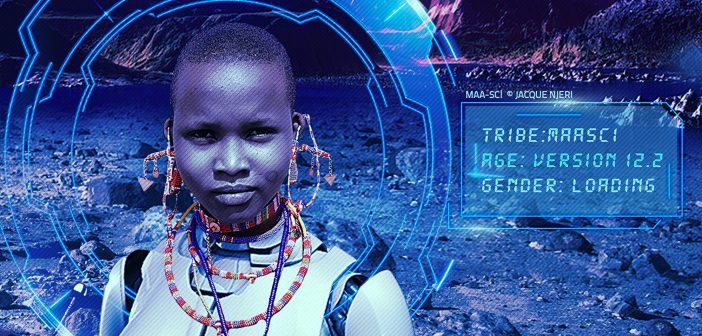
“Utopia is born of the hunger for something better, but it relies on hope as the engine for imagining such a future.” –Marge Piercy
The news has been pretty bleak for the past 18 months, and I struggle to find a few optimistic stories to include in each issue of the Dispatches from the Future of Museums newsletter. This worries me on two levels: I don’t want to add to the emotional and cognitive load already weighing people down; and I worry about contributing to a general feeling of malaise and apathy. One insidious effect of extended crises is that a relentless stream of bad news makes us feel helpless in the face of the challenges we face. When our thinking is blinkered by what’s happening now (aka “the pull of the recent”), it’s difficult to remember how things can be different, and better. And too much bad news—about racial violence, climate change, the pandemic—can make us shut down, creating a negative spiral in which we don’t take action, which only makes things worse.
So if we can’t find good news about the real world, I say, look to fiction. Utopian fiction can raise our spirits by offering a much needed reminder that things can get better, and encouragement to take action. Future fiction—embodied in books, films, graphic novels, art—can function as foresight scenarios, doing the heavy lifting of creating detailed, plausible futures, and inviting you to explore those worlds. Good future fiction activates imaginative empathy—making readers care about the effect a given future would have on people, their communities, and the world. Reading (or watching) utopian fiction can help cultivate an attitude of possibility and change, while grappling with complexity and the limits of the possible.
Utopias are also essential to futuring because they provide motivations based on hope rather than fear. Climate activists, realizing that the relentless drone of bad news is causing some people to simply shut down, are now emphasizing the need for “climate optimism”—presenting people with good news about what we can do, rather than just focusing on the depth of the disaster we face.
Unfortunately, dystopian fiction is far more common than utopic visions of the future. (Think Brave New World, The Hunger Games, The Handmaid’s Tale, Mad Max, Bladerunner—continue that list on your own.) Fiction is based on conflict, and pure utopias tend to be both boring and unrealistic. Effective utopias build on the real, imperfect world and its challenges, while activating our imagination to encompass preferred futures. Some utopian worlds pivot around a single major variable: “CliFi” explores climate futures. Others challenge the power structures of gender, race, and colonialism.
In the interest of raising your spirits and offering some relief from the news, here’s a list of some utopian fiction, crowdsourced from friends and colleagues. As you read or watch, if you can spare the mental energy, think about signals in the present that suggest this future could be possible. And for an epic win, think about actions you could take to make this bright future more likely.
Some disclaimers: many of these “utopias” include pretty graphic descriptions of the real, current world, or potential dystopias, by way of contrast. That includes environmental disaster (Ministry for the Future) and domestic violence (Woman on the Edge of Time.) And people can differ on what constitutes a bright or dark future. (I remember one extended argument with a friend about whether Margaret Atwood’s “Oryx and Crake” describes an environmental utopia, because the human race, as we know it, has gone extinct, leaving the world to regenerate.)
With that in mind, here are a few works for your consideration:
Ministry for the Future, by Kim Stanley Robinson (2021) is a sprawling work of “cli-fi” in which a transnational entity, established in 2025, advocates for the interests of future generations. In a recent interview the author admits he sets a “pretty low bar for ‘utopia’ given the narrow range of plausible climate futures. This novel is the latest pick for the Science Fiction/Real Policy Book Club hosted by Future Tense, and you can join their conversation with Robinson on October 13 at 6 pm ET.
The Dispossessed, by Ursula K. LeGuin (1974), was tagged as a favorite by a number of people responding to my call for suggestions. LeGuin herself acknowledged that this story depicts an “ambiguous utopia.” It explores feminism, sexual freedom, and anarchism by creating detailed cultures in a far distant future, set on other worlds.
In Woman on the Edge of Time by Marge Piercy (1976), time travel enables the protagonist to explore two potential futures of 2137, one of which encompasses an ecologically sound, anarchist community that eliminates traditional power and family structures. (In this interview, the author discusses a number of other feminist utopias as well.)
Utopias can reimagine the past as well as the future, and both Afrofuturism and Africanfuturism often create alternative histories to overwrite the violence of racism and colonialism. For example, The UmuEze Amara Clan and the House of Obafemi, released earlier this month, explores the work of artist Toyin Ojih Odutola. Her portraits create an imagined history of two fictional noble families in a Nigeria shaped by a past in which the economic and social devastation wrought by the trans-Atlantic slave trade and European colonialism never occurred, and neither did Nigeria’s persecution of homosexuality. As this article in Smithsonian magazine reports, Odutola “…hopes to inspire people who view these pictures to imagine a better future [noting that] ‘The speculative can be a bridge and the process of creating it an emancipatory act.’ ”
There’s a start for your reading list. Please use the comments section below, or tag @futureofmuseums on Twitter to share your recommendations for reading, or viewing. And please give yourself permission to spend some time immersed in fictive worlds that can inspire and heal.








